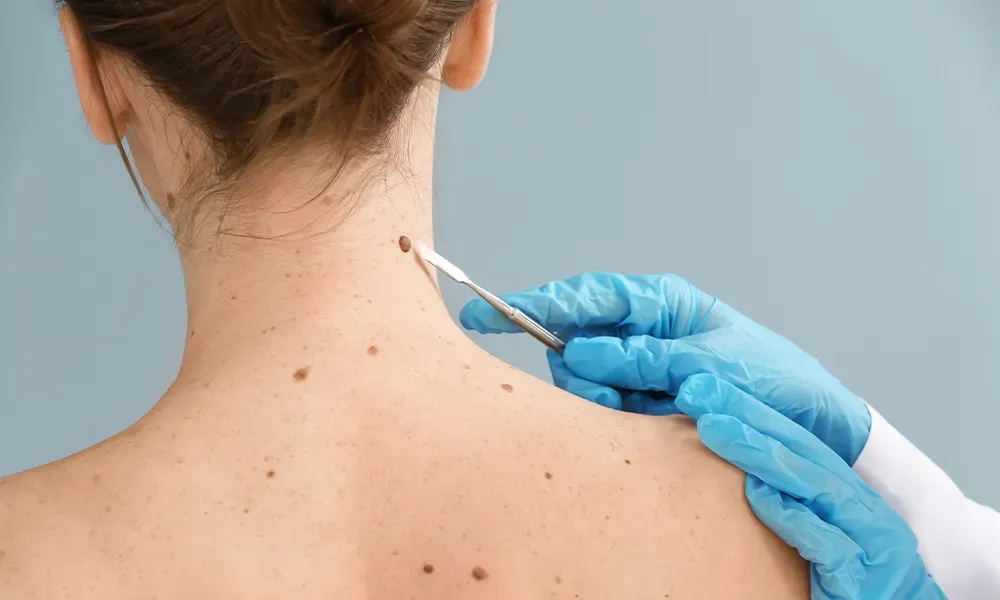
Why regular skin checks are essential for mole removal?
Our skin is the largest organ of our body, serving as a protective barrier against the outside world. It’s constantly exposed to various environmental factors, including harmful UV rays from the sun. While our skin does an incredible job of shielding us, it’s not invincible. Moles are clusters of pigment cells called melanocytes. Most people have between 10 to 40 moles on their bodies, and they can appear at any time throughout their lives. While the majority of moles are benign (non-cancerous) develop into melanoma the most dangerous form of skin cancer.
Importance of regular skin checks
- The most crucial benefit of regular skin checks is the early detection of potential skin cancers. When caught early, skin cancers, including melanoma, have a much higher cure rate.
- Our skin is constantly changing. Regular checks allow you to become familiar with your skin’s normal appearance, making it easier to spot any new or changes in existing ones.
- Knowing that you’re actively monitoring your skin health can provide peace of mind. If you do notice any changes, you can seek professional advice promptly.
- Regular self-checks are free and even professional skin checks are relatively inexpensive compared to the potential cost of treating advanced skin cancer.
- Not all moles need to be removed. Regular checks help identify which moles might require removal, either for cosmetic reasons or due to potential health risks.
Mole removal process
If a dermatologist determines that a mole should be removed, there are several methods.
- Shave excision- The mole is shaved off flush with the skin using a surgical blade.
- Punch excision– A small, cookie-cutter-like tool is used to cut out the mole and a small amount of surrounding skin Mole Removal.
- Surgical excision- The entire mole and some surrounding skin are cut out, and the wound is closed with stitches.
The method used depends on factors the size and location of the mole, as well as whether it’s suspected to be cancerous. After removal, the mole is typically sent to a laboratory for analysis to ensure no cancerous cells are present.
Incorporating regular skin checks into your routine
Making skin checks a regular part of your health routine doesn’t have to be complicated or time-consuming.
- Monthly self-checks– Set aside times each month to thoroughly examine your skin. Use a mirror to check hard-to-see areas, or ask a partner to help.
- Annual professional checks- Schedule a yearly skin check with a dermatologist, especially if you have a history of unusual moles or skin cancer.
- Use technology– There are now smartphone apps that can help you track and monitor your moles over time.
While regular skin checks are essential for early detection and determining the need for mole removal, prevention plays a vital role in overall skin health. Limiting sun exposure, especially during peak hours, wearing protective clothing, using a broad-spectrum sunscreen at least SPF 30 can significantly reduce your of developing problematic moles or skin cancer.


